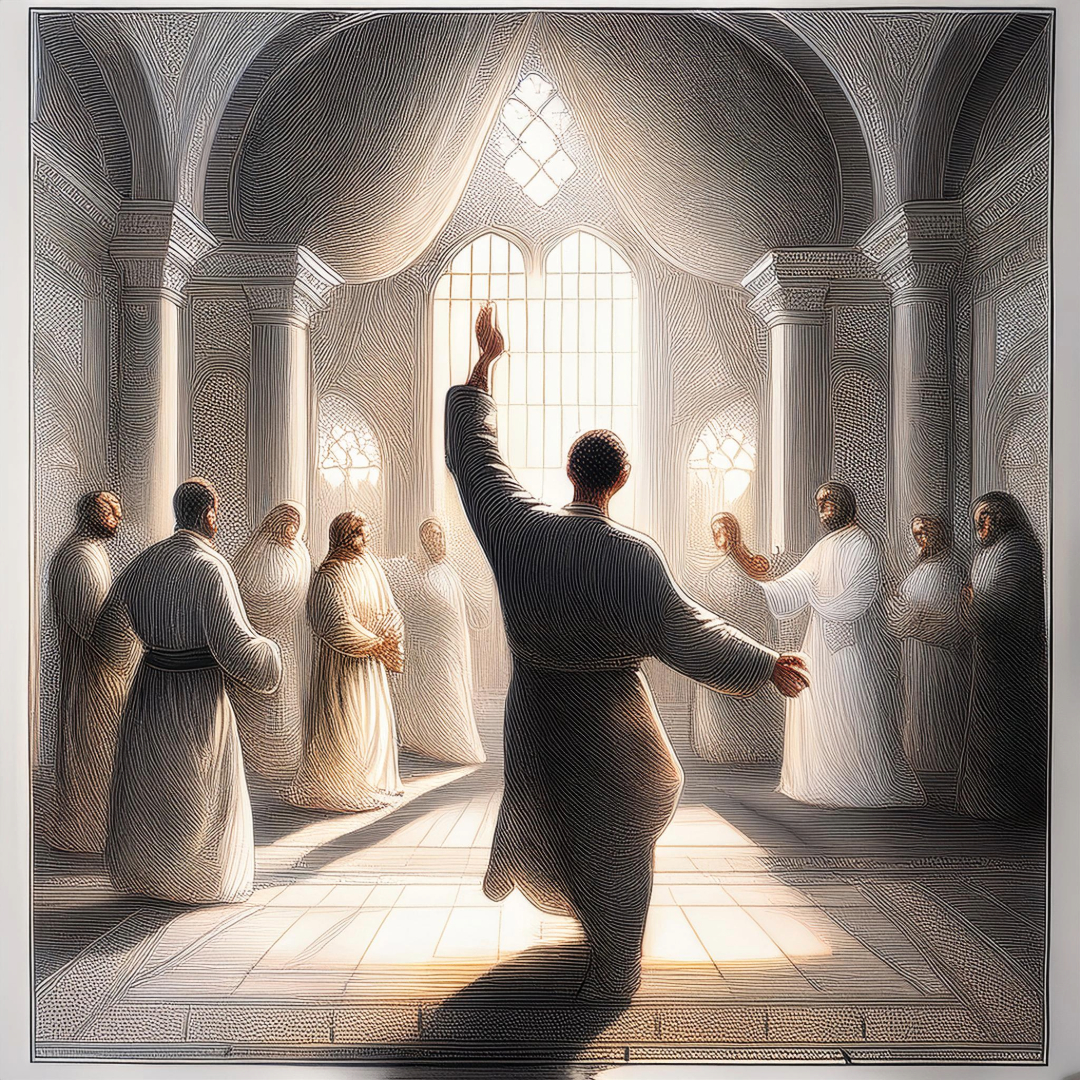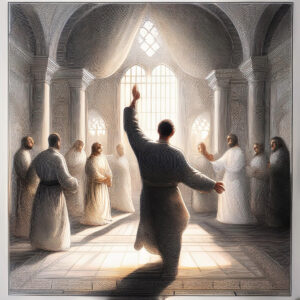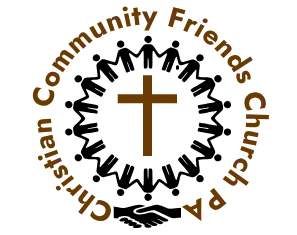Dancing in the Father’s House ( Luke 15:25-32 )
Dancing in the Father’s House ( Luke 15:25-32 )

25 “Now his elder son was in the field; and when he came and approached the house, he heard music and dancing.
26 He called one enslaved person and asked what was happening.
27 He replied, ‘Your brother has come, and your father has killed the fatted calf, because he has got him back safe and sound.’
28 Then, he became angry and refused to go in. His father came out and began to plead with him.
29 But he answered his father, ‘Listen! For all these years I have been working like a slave for you, and I have never disobeyed your command; yet you have never given me even a young goat so that I might celebrate with my friends.
30 But when this son of yours came back, who has devoured your property with prostitutes, you killed the fatted calf for him!’
31 Then the father said to him, ‘Son, you are always with me, and all that is mine is yours.
32 But we had to celebrate and rejoice, because this brother of yours was dead and has come to life; he was lost and has been found.”
Dear Church,

I would like to begin today’s sermon by sharing some of my past experiences, such as visiting and ministering to different churches. I am fortunate or blessed for the opportunity to observe and learn from others. I was born in Bhutan, grew up in Nepal, and now reside in the United States. Yet even though I’ve lived in multiple places, I have witnessed a global issue—people moving from one place to another, sometimes forced by political turmoil, hatred, injustice, oppression, and hierarchical systems.
Even though slavery in the United States was politically abolished in the 1800s, we still see echoes of those systems. Think for a moment about Evangelicals today who support anti-immigrant policies and refuse to welcome God’s people. They are not ready to embrace others with the love of God. What’s going on within the church? Why is there so much chaos and division among God’s people?
It doesn’t mean that we all share the same views or that we are all wrong, but we are constantly affected by our human nature—our imperfections, our mistakes, and our tendency to harbor bad attitudes toward others. This happens within families, among friends, and even in the church. I believe the state of the church itself is the root of this. “YOU” are the church, including me.
I want to talk today about the story of the prodigal son, but not in the way you might expect. I will not focus on the younger son’s repentance in verse 21: “Father, I have sinned against heaven and before you; I am no longer worthy of being called your son.” Nor am I focusing on the father’s immediate forgiveness in verse 22: “Quickly, bring out a robe—the best one—and put it on him; put a ring on his finger and sandals on his feet.”
Instead, I want to draw your attention to verse 25, to the father’s response to the situation: “Music and dancing.”
When the elder son approached the house, he heard music and dancing. This is where I want to stop and meditate for a moment. “Dance” is one of the most controversial expressions in worship, especially in Bhutanese Christian communities and historically in Christianity.
Debbie Roberts, author of Rejoice: A Biblical Study of Dance, reminds us that ancient people made no distinction between dance as natural and dance as spiritual. They danced in worship and in warfare. For example, King Jehoshaphat appointed singers to lead the army into battle (2 Chronicles 20:21-22). In the Old Testament, dancing was not foreign to Hebrew liturgy. Miriam celebrated with dance after crossing the Red Sea (Exodus 15:20), and David danced before the Ark of the Covenant in 2 Samuel 6:16-17. His dance expressed deep spiritual joy and gratitude for God’s presence among His people.
The Psalms are full of dancing and music. The Bible doesn’t just emphasize laments and pleas—it calls us to be overjoyed for God’s glory. Dances and music in Nepali and Bhutanese cultures and contexts are like DNA, nothing foreign to us; people dance to express their emotions, and they feel authentically connected to all dimensions of spirituality, emotion, and physicality if dance is contextually oriented in the worship Liturgy, especially to Indigenous groups throughout the world not only Nepalese to all indigenous group in the world. Traditional and cultural dances and music for Nepali origin people such as Dohori (दोहोरी), Deuda (देउडा), Lakhe Dance (लाखे नृत्य), Gaine (गाइने)-traditional music, are intimately connected, it definitely makes our worship wholistic and sustains forever to the generation. Modernization and the plague of temptation, such as imitation, comparison, and competition in modern history, are deteriorating our culture and identity. Eventually, it leads to self-destruction, confusion, an identity crisis, and a huge impact on the identity of Christ itself and eventually impact on our worship lifestyle and church.
Now, I do want to warn against pagan dances that promote immoral behavior or are centered on personal glory. In today’s digital age, many are tempted by popular dance trends focusing on self-exposure. Dance and worship before devils, like false prophets in the Old Testament. But that’s not what I’m talking about here. I’m talking about reclaiming the dance created by God—a holy, joyful expression that honors Him. Dance is a powerful form of emotional, physical, and spiritual expression.
In 2020, I was sick, and my doctor encouraged me to move my body. Movement can release burdens and express what cannot be spoken. This is true in our worship as well. We need worship that involves the whole person—cognitive, physical, and emotional—not for the purpose of arousing erotic feelings or bringing a nightclub atmosphere into the house of God but for presenting ourselves wholly before Him.
What is holding you back from moving in the presence of your Father? Is it your culture, your environment, or fear of being excommunicated from church leadership?
Let me tell you something very powerful: God’s people—Christians—are struggling to love others, embrace vulnerability, and practice hospitality. Emotions like hatred, anger, loneliness, and isolation plague us. Why? I believe it’s because we are not expressive in our worship. We hold back our bodies, and as a result, our emotions remain trapped inside.
But God wants us to experience deliverance, peace, and stability. Our bodies are temples of the Holy Spirit; we should present them before God in worship.
So, what does “dancing in the father’s house” mean? It is the rhythm of life, reconciliation, and expressing your whole self—body, mind, and soul—before God. We are invited to celebrate and rejoice in His house, just like the father did when the lost son returned.
Can you join in the dance today?
Amen.

